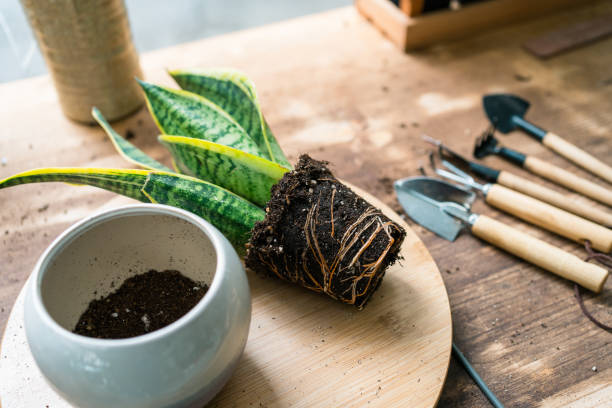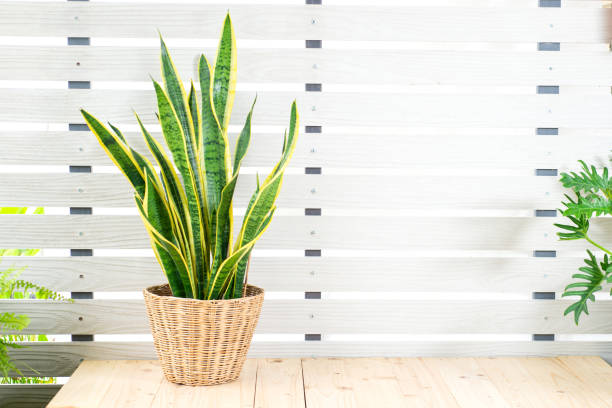Snake plants, also known as Sansevieria, are some of the most popular and resilient houseplants. Known for their striking appearance and minimal maintenance requirements, these plants are perfect for beginners and experienced gardeners alike. Growing a snake plant is relatively straightforward, but there are specific tips and guidelines that can help ensure its success.
Choosing the Right Snake Plant

There are several varieties of snake plants, each with unique characteristics. Some popular options include the Sansevieria trifasciata, also known as the “”Mother-in-Law’s Tongue,”” and the Sansevieria cylindrica, which features cylindrical leaves. Selecting the right variety depends on your aesthetic preference and the growing conditions in your home. Make sure to choose a healthy plant with vibrant leaves and no signs of disease or pests.
Optimal Lighting Conditions
Snake plants are versatile when it comes to lighting. They can thrive in low light conditions but will grow faster and exhibit more vibrant colors when placed in indirect sunlight. Avoid direct sunlight, as excessive exposure can scorch the leaves. If you’re placing the plant in a low-light area, consider rotating it periodically to ensure even growth.
Proper Watering Techniques
One of the most common mistakes when growing snake plants is overwatering. These plants are drought-tolerant and prefer to dry out completely between waterings. Watering once every 2-3 weeks is usually sufficient. During the winter months, watering can be reduced even further. It’s important to use a well-draining soil mix to prevent root rot, which snake plants are particularly susceptible to.
Soil and Potting
Choosing the right soil is crucial for the health of your snake plant. A cactus or succulent soil mix with good drainage works best. When it comes to potting, opt for a container with drainage holes to prevent water from accumulating at the bottom. Repotting should be done every 2-3 years or when the plant becomes root-bound. This process encourages new growth and helps maintain the plant’s health.
Common Issues and Solutions
While snake plants are generally low-maintenance, they can still encounter issues. Common problems include yellowing leaves, which can be a sign of overwatering, or brown leaf tips, often caused by low humidity. To resolve these issues, first assess your watering habits and adjust accordingly. Ensure your plant is placed in an environment with adequate humidity and proper ventilation.
Basic Care Checklist
- Choose a healthy plant variety
- Place in indirect sunlight or low light
- Water every 2-3 weeks, allowing soil to dry out completely
- Use a well-draining soil mix
- Repot every 2-3 years
Conclusion
Growing a snake plant (Sansevieria) is a rewarding experience that requires minimal effort and yields a striking addition to any home. By choosing the right variety, providing optimal lighting, employing proper watering techniques, using suitable soil, and addressing common issues promptly, you can ensure your snake plant thrives. Whether you’re a novice or a seasoned plant enthusiast, the snake plant is an excellent choice for adding greenery and elegance to your space.
FAQs
1. How often should I water my snake plant?
Water your snake plant every 2-3 weeks, allowing the soil to dry out completely between waterings to prevent root rot.
2. Can snake plants grow in low light?
Yes, snake plants can thrive in low light conditions, although they will grow more slowly and may not show as vibrant colors as those placed in indirect sunlight.
3. What type of soil is best for snake plants?
A well-draining soil mix, such as cactus or succulent soil, is ideal for snake plants. This helps to prevent waterlogging and root rot.
4. How do I know when to repot my snake plant?
Repot your snake plant every 2-3 years or when it becomes root-bound. Signs that it’s time to repot include roots growing out of the drainage holes or roots circling the surface of the soil.
5. Why are the tips of my snake plant leaves turning brown?
Brown tips on snake plant leaves can be caused by low humidity, inconsistent watering, or poor lighting. Adjusting these factors can help resolve the issue.
